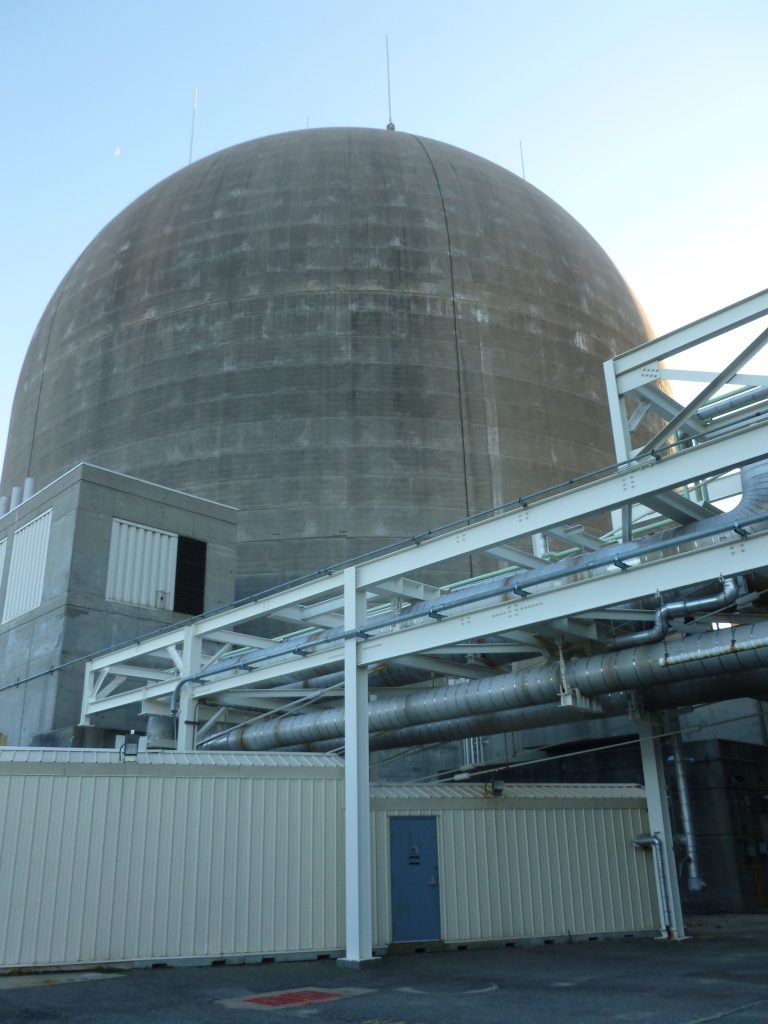Comprehensive Assessment and Impact of Alkali-Silica Reaction on the Seismic Response of a Nuclear Structure

Many nuclear power plant structures were built more than 20 years ago with concrete mixes that were not reviewed for Alkali-Silica Reactivity (ASR). In the absence of review for ASR potential, some of the structures were constructed with concrete mixes that included reactive aggregates with no mitigation. The concrete elements in these structures are consequently at risk for ASR, with higher likelihood where they are submerged or exposed to frequent wetting. ASR impacted concrete will experience cracking that affects the mechanical properties, including the static and dynamic responses of the structures to external loadings. This paper presents a comprehensive method that was used to assess the impact of ASR induced concrete degradation on the structural response and design of a containment enclosure building (CEB, 228 ft tall dome, 158 ft diameter) that is partially below the water table. The process included materials evaluation, site inspection, distress measurement, determination of material properties for the distressed concrete, simplified seismic analysis, and three-dimensional finite element analysis (3D FEA) to evaluate structural safety. The results of the study show that the overall seismic responses of the structure were not significantly impacted by the current reduced concrete properties. Results from 3D FEA show that loads are redistributed moderately from localized areas with ASR impact to areas with less ASR impact. However, the original design of the structure had sufficient margin of safety to meet the design requirements with redistribution of loads.
Publisher
22nd Conference on Structural Mechanics in Reactor Technology: SMiRT-22, Transactions, San Francisco, CA